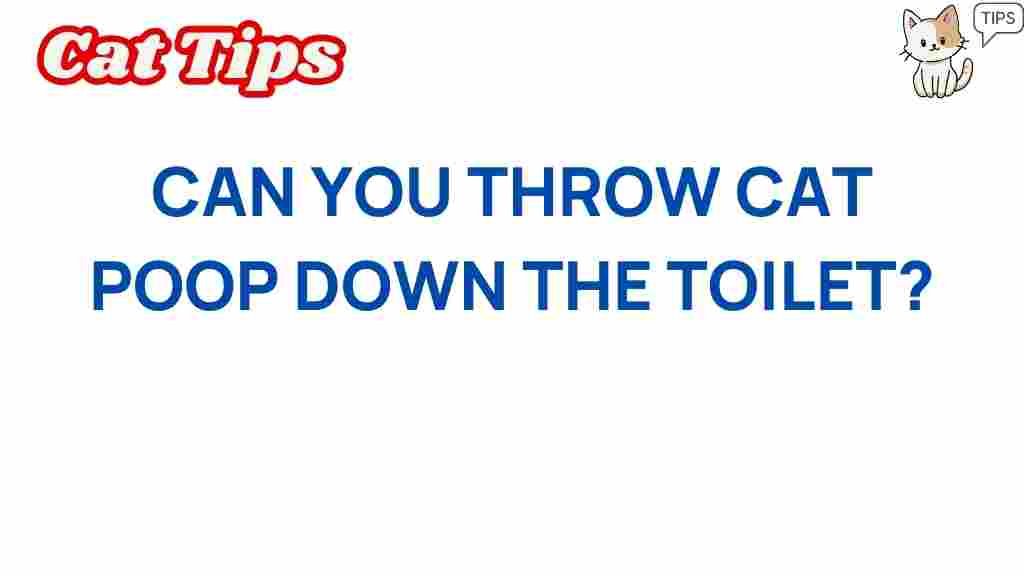The Surprising Truth: Can You Really Flush Cat Waste?
As a cat owner, you may have wondered about the best way to dispose of your cat’s waste. While many pet owners are accustomed to using traditional litter boxes, the idea of flushing cat waste down the toilet has gained popularity in recent years. But is it safe? Is it environmentally friendly? In this article, we’ll explore the surprising truth about flushing cat waste, including the advantages and disadvantages, the best practices for doing so, and some alternative disposal methods.
Understanding Cat Waste
Cat waste, including both urine and feces, can pose several health risks if not handled properly. It contains harmful bacteria, parasites, and toxins, which can affect both humans and other animals. Understanding the nature of cat waste is crucial before deciding on a disposal method.
- Bacteria: Cat feces can contain harmful pathogens such as Salmonella and E. coli.
- Parasites: One of the most concerning parasites found in cat waste is Toxoplasma gondii, which can pose severe health risks to pregnant women and immunocompromised individuals.
- Environmental Concerns: Traditional disposal methods can contribute to landfill waste and environmental pollution.
The Case for Flushing Cat Waste
Flushing cat waste may seem like a convenient option, but it’s essential to weigh the pros and cons. Here are some reasons why some cat owners consider flushing:
- Convenience: Flushing cat waste is quick and can be done without having to handle the litter directly.
- Less Odor: Flushing can reduce odors associated with traditional litter disposal.
- Reduced Landfill Waste: Flushing waste can potentially reduce the amount of waste going to landfills.
Step-by-Step Process for Flushing Cat Waste
If you’ve decided to flush your cat’s waste, here is a safe and effective method to do so:
- Use Flushable Cat Litter: Ensure you are using a litter specifically labeled as flushable. This type of litter is designed to break down easily in water.
- Separate Waste: Scoop out the feces from the litter box and avoid flushing large clumps of litter.
- Flush in Small Amounts: Only flush a small amount of waste at a time to prevent clogs. Ideally, flush one scoop at a time.
- Monitor Your Plumbing: Regularly check your plumbing system for any signs of blockage or issues after you start flushing.
Potential Risks of Flushing Cat Waste
While flushing cat waste can be convenient, there are some risks associated with this practice:
- Plumbing Issues: Not all plumbing systems are designed to handle cat litter, even if it is labeled as flushable.
- Environmental Impact: Flushing waste can still contribute to water pollution, particularly if harmful pathogens are not adequately filtered out.
- Health Risks: Flushing cat waste can potentially spread harmful parasites into local waterways.
Best Practices for Flushing Cat Waste
If you decide that flushing cat waste is the right choice for you, consider these best practices:
- Consult Local Regulations: Check with your local waste disposal regulations to ensure that flushing cat waste is permitted.
- Use Biodegradable Litter: Opt for biodegradable litters that break down quickly and are less harmful to the environment.
- Educate Yourself: Stay informed about the potential health risks associated with cat waste and how to mitigate them.
Alternatives to Flushing Cat Waste
If flushing isn’t the best option for you, there are several alternatives for disposing of cat waste:
- Composting: Some cat owners choose to compost cat waste using specific composting systems designed for pet waste.
- Trash Disposal: Use a sealed bag or container to dispose of cat waste in the trash. This is the most common method and is generally safe.
- Pet Waste Disposal Systems: Consider investing in a pet waste disposal system that is designed to handle animal waste safely.
Troubleshooting Tips for Flushing Cat Waste
If you encounter issues while flushing cat waste, here are some troubleshooting tips:
- Clogs: If your toilet becomes clogged, stop flushing immediately and use a plunger or call a plumber if necessary.
- Odor: If you notice unpleasant odors, ensure you are using a high-quality flushable litter and clean the litter box regularly.
- Health Concerns: If you or someone in your household experiences illness after flushing cat waste, consult a medical professional.
Conclusion: The Final Verdict on Flushing Cat Waste
Flushing cat waste can be a convenient option for some pet owners, but it is essential to consider the potential risks and alternative disposal methods. Understanding the nature of cat waste, using the right products, and following best practices can help you make an informed decision. Ultimately, whether you choose to flush or not, the most important aspect is ensuring that you handle your cat’s waste responsibly and safely.
For more information on pet care and waste disposal, check out this resource that offers valuable insights and tips. If you’re looking for eco-friendly litter options, don’t forget to explore our recommended products.
This article is in the category Behavior and created by CatTips Team
